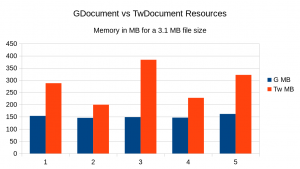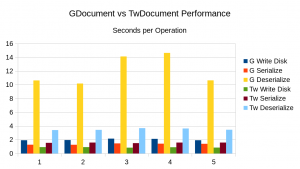This post is based on my experience on not just using but creating and maintaining Vala libraries.
Rust is on the horizon and have voices to use it instead Vala. For Vala, we can say, is true to be niche oriented language, because it just create GObject based applications and libraries. For Rust, it has a more general purpose, with save concurrency and save programming: true again.
I have downloaded Rust to start using it, because seems to be very convenient for C development replacement, specially may be suitable to replace old libxml2 library, hopping some some have started to write an XML parser and writer, I can re-use in my own projects.
After taking a time to check at Rust documentation and write a post about GObject and Rust, I would like to share my thoughts about Vala and Rust.
Vala have a very specific target: GObject. We can use Vala to create GObject classes and define API interfaces using GInterface, but in a sugar and very productive syntax. Doing Object Oriented Programming using Vala and GObject is easy and natural.
I’ve managed to get W3C set of API interfaces based on specifications for DOM and SVG, because Vala provides a kindly close interface definition syntax to the ones from W3C. Implement them have been a matter of, you know, work. W3C interfaces are really complex in a way of their relations ships and dependencies, which should be very difficult to implement if doing in C and GObject/GInterface. This is not false for Rust, because it doesn’t have a GObject/GInterface mechanism, at least not jet.
In my opinion, Rust should develop its own, more powerful and secure, implementation of GObject/GInterface, based in their own internal types, like Traits.
I don’t know if Rust is planning to provide an Object Oriented like mechanisms, like GObject/GInteface, with properties, signals, introspection and inheritance, but is very convenient for other languages and implementing Object Oriented API, like the ones from W3C.
While I write this article, I’m studding Rust, to find equivalences and possibilities, thinking on how to port my work to Rust if possible. At least, for now, I can’t, but I have been just little time, I need to follow its development and road map.
Vala development can be used by Rust applications and libraries, because is C and GObject, and because it produce GIR files to create bindings easily for Rust, along with other languages.
If GObject is your choice to write your next library or Application, I can recommend to use Vala: you’ll get a very productive syntax and a easy bindable API.
No, I’ve don’t want to stop my self to Vala. Just is very convenient to produce GObject based libraries, use any C based library too, and is really productive. My work on GXml, can’t be just dropped and its capabilities to Serialize GObject classes, by introspection of its properties, are very useful and productive. I’ll share more in these later.

